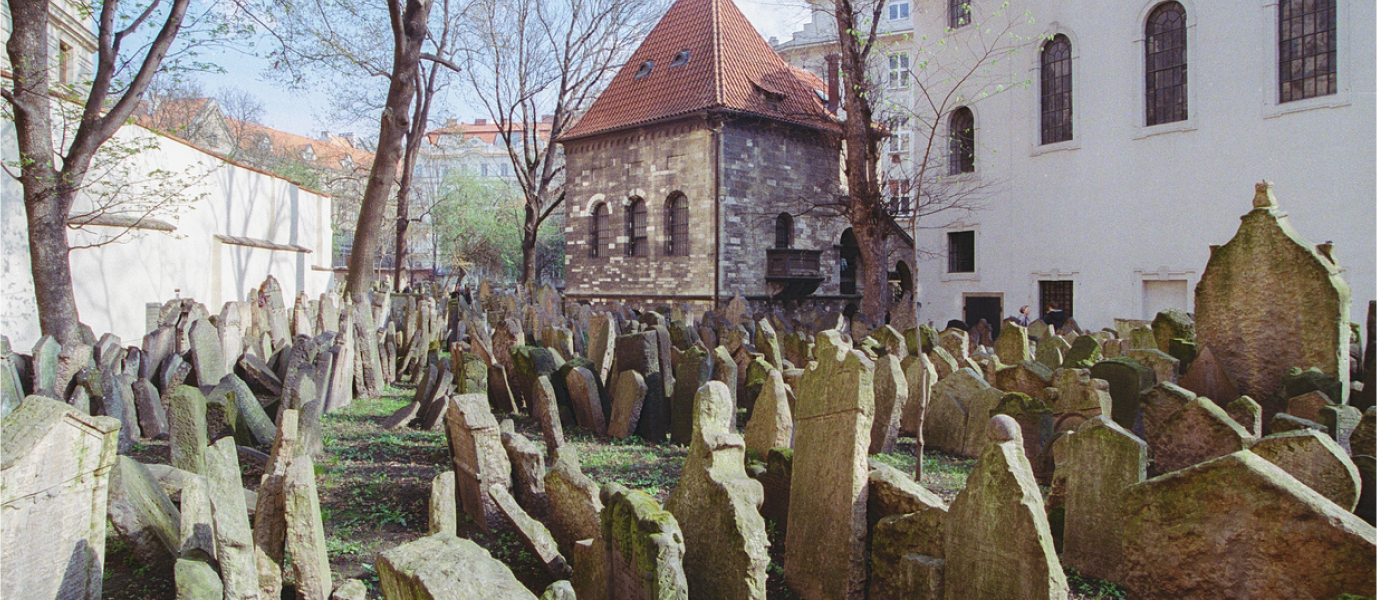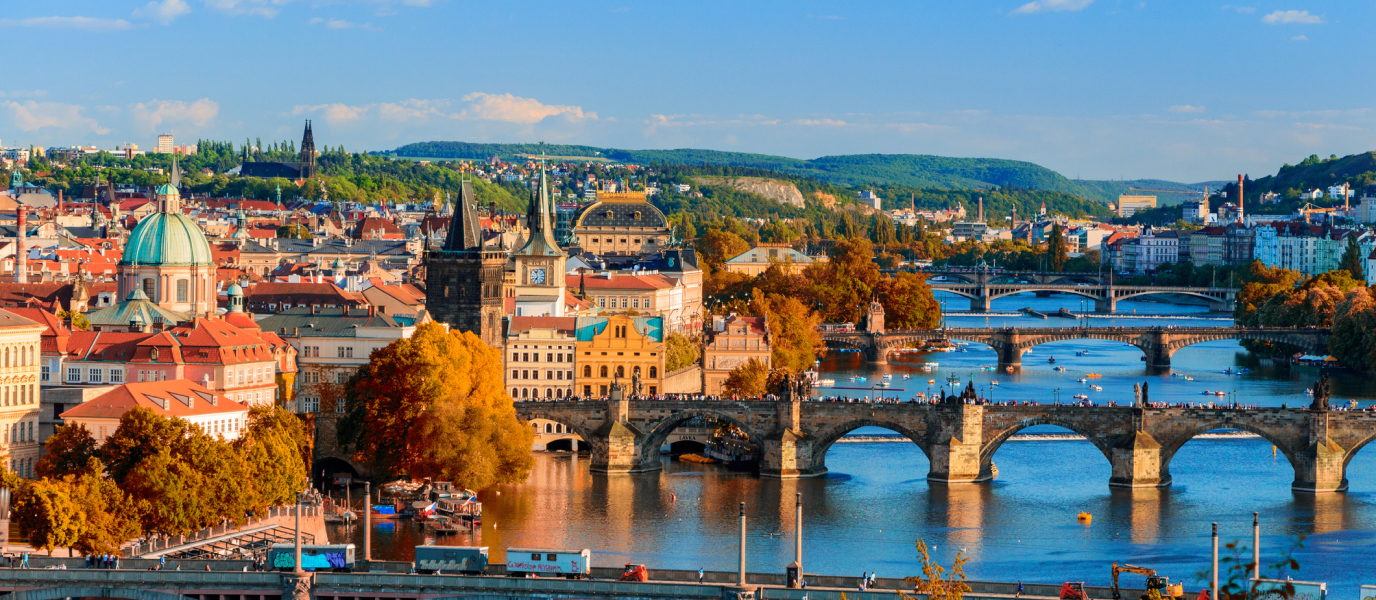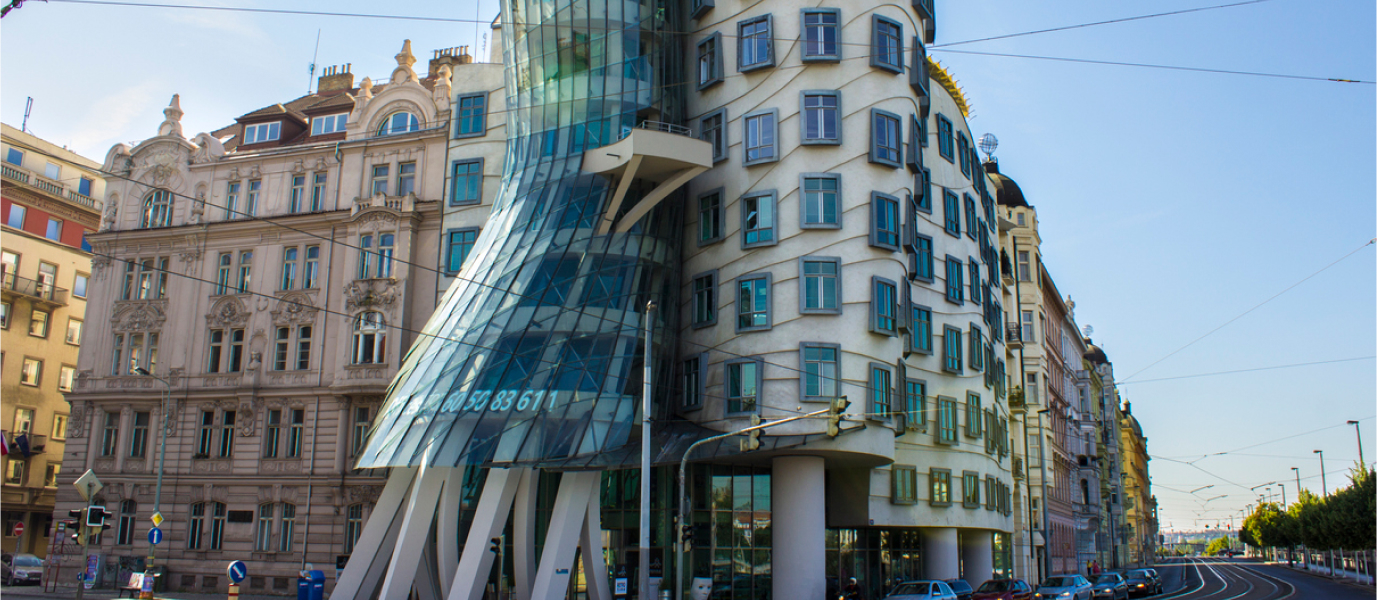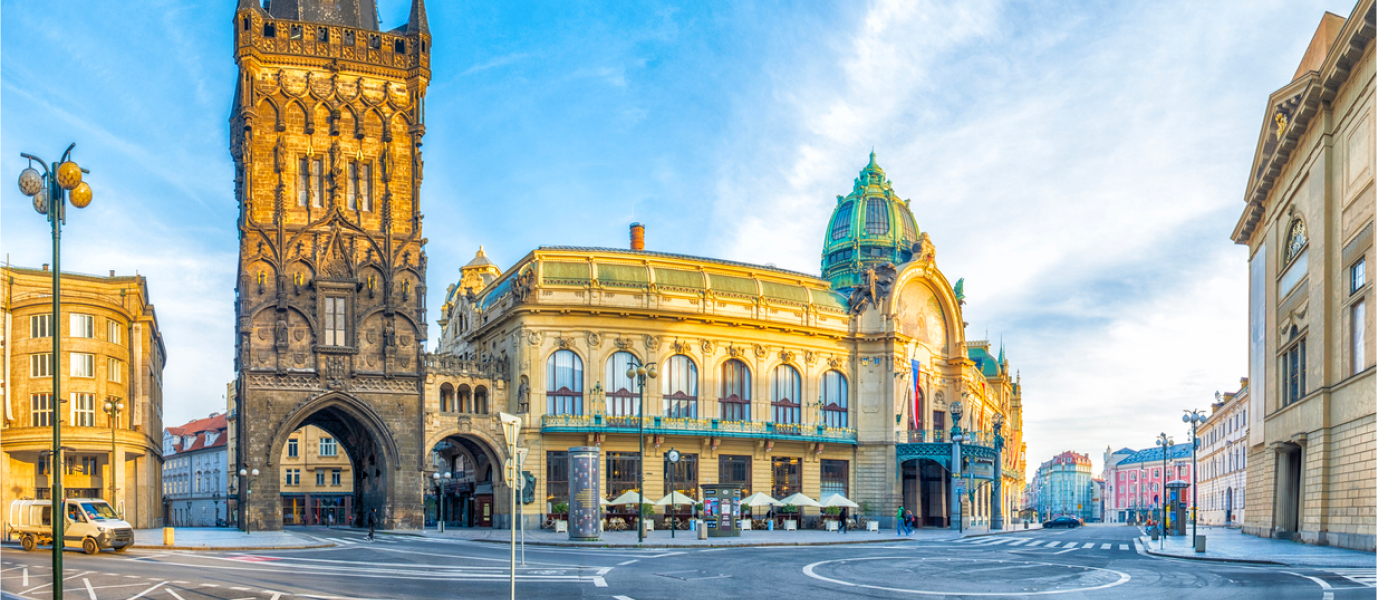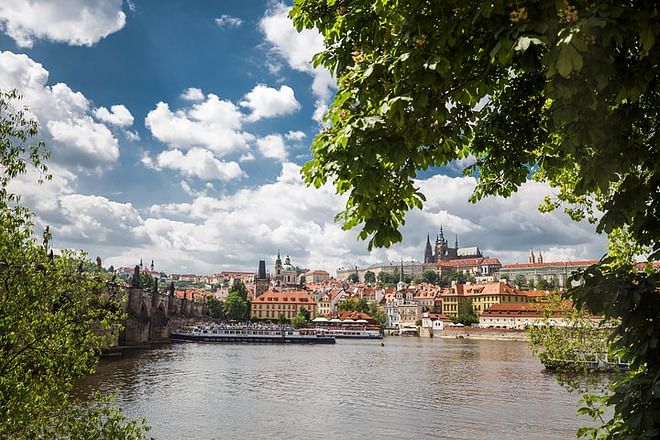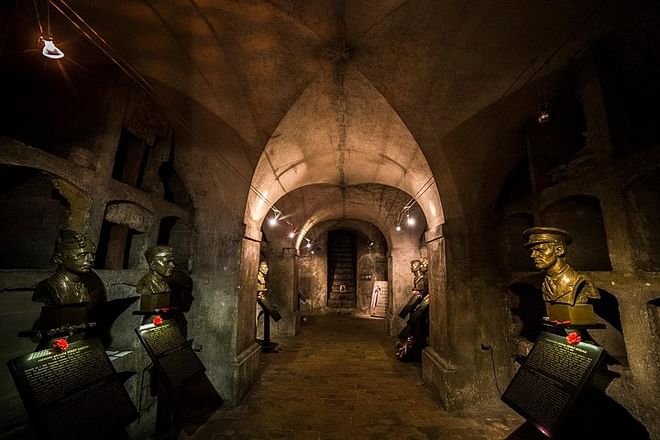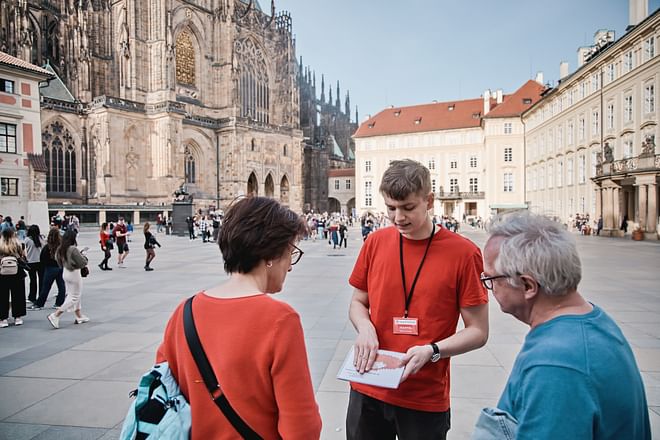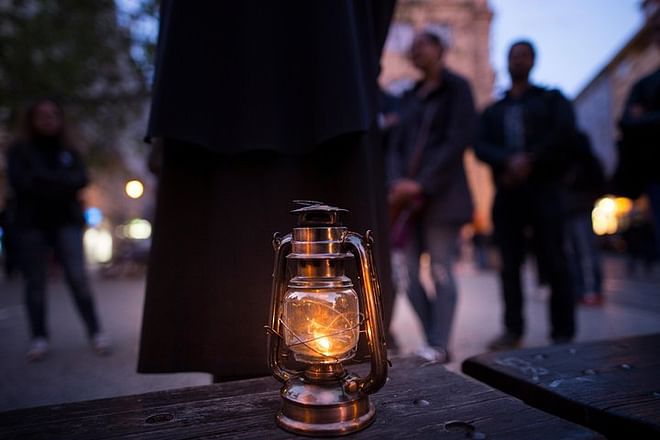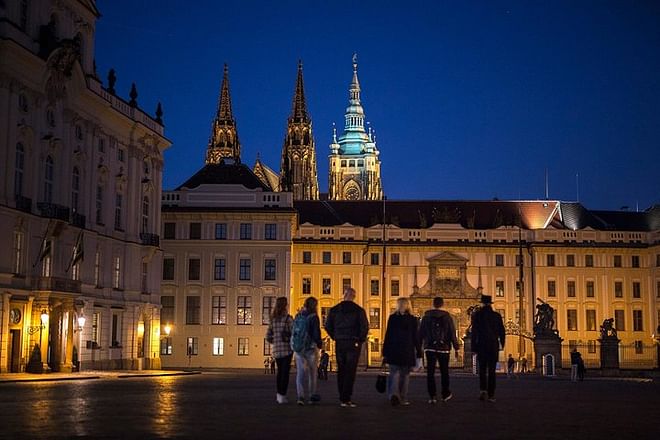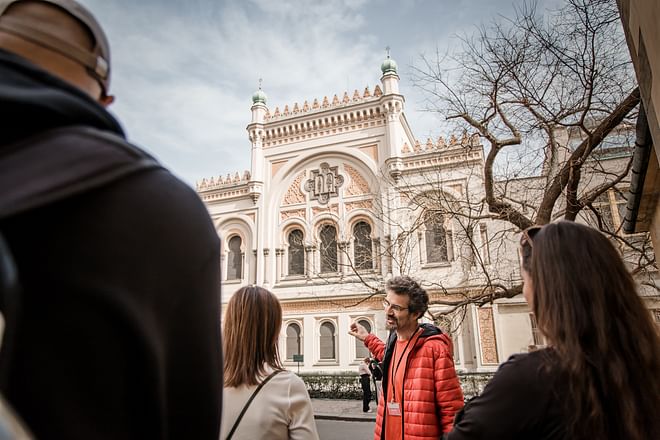Travellers who visit Prague’s Old Jewish Cemetery are struck by its austerity. Although there are no ostentatious tombs or flowers, there are thousands of stones scattered throughout the grounds and on top of the gravestones, as per Jewish tradition. This quiet place of seclusion invites visitors to take a break from the bustling city sounds as time stands still.
The cemetery’s historical importance is clearly evident in this place where prominent Jewish figures are buried. Founded in the fifteenth century, it is one of the most important cemeteries in the Jewish quarter. Its appearance is interesting and simple. The densely arranged gravestones, some fallen, leaning or worn over time, create a mysterious atmosphere. Curiosity accompanies visitors at all times, a feeling that is accentuated in the nearby synagogues.
Visiting Prague’s Old Jewish Cemetery is a unique experience
There is no such thing as a must-see landmark, but certain places are worth visiting due to their symbolism. This applies to Prague’s Old Jewish Cemetery. The first thing that stands out is how different it is from other places of rest. Leave behind the city noise and your worries at the entrance, and walk through the crammed gravestones as the experience is transformed into a permanent memory. Time stands still as you try to decipher the tombstone engravings, many of vast historical and artistic value. The experience is further enhanced if there are few visitors. In the winter, for example, one of the most breathtaking sights is seeing the cemetery covered in a blanket of snow.
This was the only place where Jews were buried during more than 300 years. Up to 12,000 gravestones have been counted, but the cemetery is the resting place for as many as 100,000 souls. The lack of space made it necessary to cover existing graves with new earth so others could be placed on top. The oldest gravestone belongs to the liturgical poet Avigdor Kara, who died in 1439.
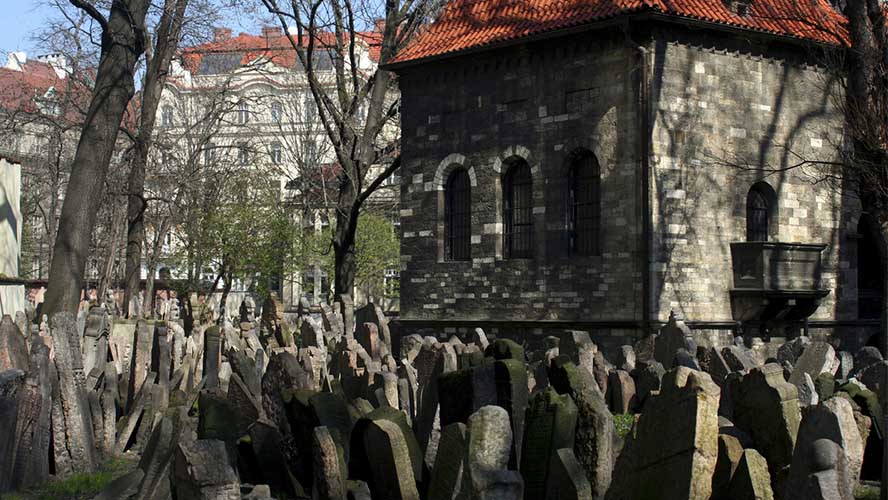
Figures and legends linked to Prague’s Old Jewish Cemetery
One of the most renowned individuals buried in Prague’s Old Jewish Cemetery is the rabbi Judah Loew, who was extremely important in sixteenth-century Europe. The creation of Golem, a mysterious creature with mystical powers, is attributed to him. According to legend, this giant made of clay defended the Jewish ghetto from anti-Semitic attacks.
The tomb of this philosopher, mystic and Talmudic scholar has become a place of pilgrimage. Jews from all over the world travel here, particularly on the anniversary of his death, 17 September 1609. He is believed to have magical powers, which is why small pieces of paper containing written messages and wishes are regularly placed around his gravestone in the hope that they come true. This is a common custom in Jewish cemeteries. The eighteenth-century rabbi David Oppenheim and the mathematician, astronomer and historian David Gans, who died in 1613, are also buried here.
Another legend linked to Prague’s Old Jewish Cemetery is that of the Elders of Zion, prominent rabbis who would supposedly meet here to plan their global domination. This conspiracy theory is reflected in an anti-Semitic pamphlet titled The Protocols of the Elders of Zion, which was published in 1902 in Czarist Russia. Its aim was to justify the persecution of Jews in the pogroms. This event inspired writers such as Umberto Eco, who included it in his novel The Prague Cemetery.
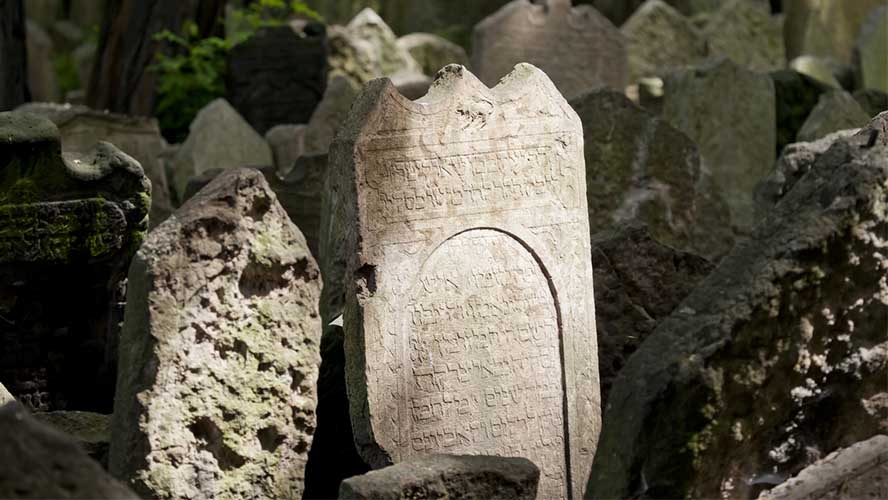
Synagogues in the Jewish quarter. Let’s begin with the Pinkas Synagogue.
Josefov, Prague’s Jewish quarter, is home to six synagogues, which serve as places of worship and study for Jews. Except for the Old New Synagogue, they can all be visited in conjunction with the Old Jewish Cemetery. These monuments form part of the Jewish Museum and a single ticket may be purchased for admission to all the sites. The cemetery is located between the Pinkas and Klausen synagogues.
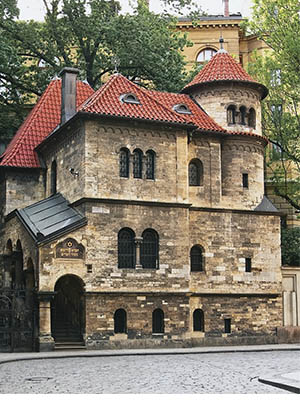
The Pinkas Synagogue is the most important in the itinerary. With its late Gothic style, it is the second oldest synagogue of the group, preceded by the Old New Synagogue. It was founded in the fifteenth century by Aaron Meshulam Horowitz, a distinguished member of the Prague community. After the Second World War, it was dedicated to the memory of Bohemian and Moravian Holocaust victims. The synagogue remained closed during the communist regime but was later reopened in 1995. Its walls are covered with the names of 77,297 Jews who were murdered by the Nazis. There is also a collection of pictures drawn by children held at the Terezín concentration camp near Prague. Memories of the extermination and the horrors of war tend to shock visitors.
The Spanish Synagogue, Moorish inspiration in Prague
The Spanish Synagogue is located a bit farther from the Old Jewish Cemetery. It is known for its beauty and elaborate decorative elements, particularly inside. The style, based on Moorish influences, is reminiscent of the Alhambra in Granada. The synagogue was built between 1868 and 1893 on the site of another Jewish temple, the Old School, and has undergone numerous renovations over the years. During the Nazi era, it was used to store property that had been confiscated from the Jews.
The second level houses an exhibition on the history of Bohemian and Moravian Jews up through the twentieth century. The space is also used for Jewish religious events and classical music concerts.
Other sites near the cemetery include the Klausen Synagogue, which contains interesting editions of Jewish books; the Maisel Synagogue, home to a large collection of traditional Jewish objects; and the High Synagogue, consisting of two levels designed in Renaissance style. It originally formed part of the Jewish Quarter Town Hall, which it was adjacent to.
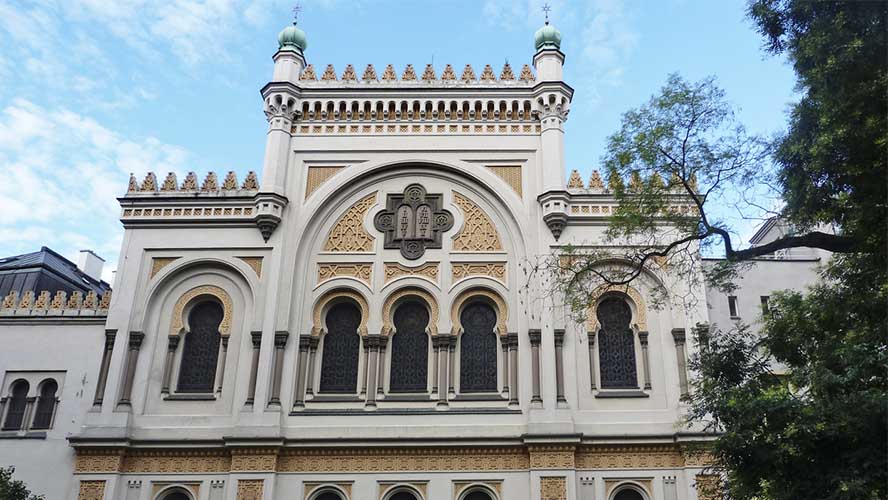
The Old New Synagogue, one of the first Gothic buildings in Prague
The Old New Synagogue, one of the oldest in Europe, was built around 1270 as one of Prague’s first Gothic buildings. It is famous for its remarkable stone decorations, wrought iron grills and Gothic lamps. This building has survived fires and the ghetto’s demolition in the late nineteenth century. It has also witnessed the terrible pursuit experienced by the Jews, followed by the Holocaust.
According to legend, the lifeless body of the mystical Golem creature is hidden in the attic, waiting to be awakened. This synagogue continues to be one of the most important places of worship in the Czech capital.
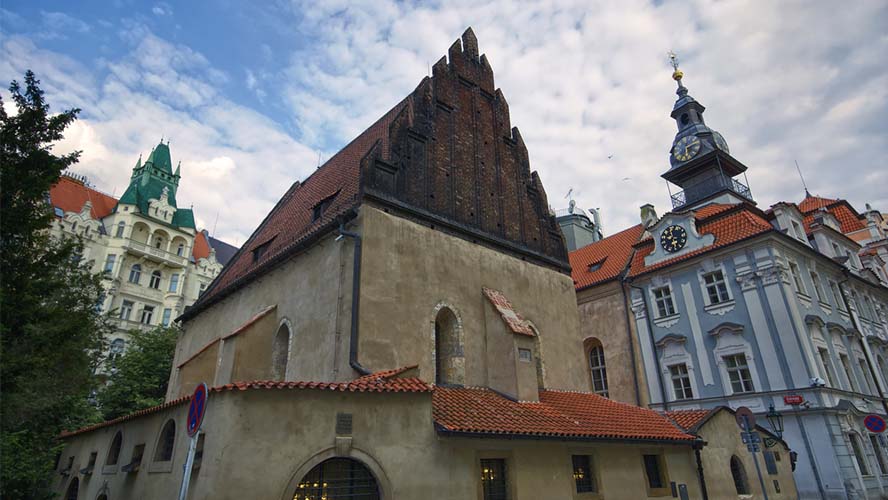
Kafka’s tomb at the New Jewish Cemetery in Prague
Franz Kafka’s tomb is another popular landmark in Prague. Literature enthusiasts flock here to pay their respects to the author who wrote renowned works such as The Metamorphosis. To visit the New Jewish Cemetery, head to the Strašnice district. Founded in 1890, it is ten times bigger than the Old Jewish Cemetery. It is located next to Olšany, the city’s public cemetery, and is noted for its Art Nouveau monuments.
Kafka’s grave can be found to the right of the entrance, in the first row. The writer is buried next to his parents and three sisters, who died in Nazi extermination camps. There are many spots in Prague that honour this twentieth-century literary genius, such as the Franz Kafka Memorial, located next to the Spanish Synagogue.




































































